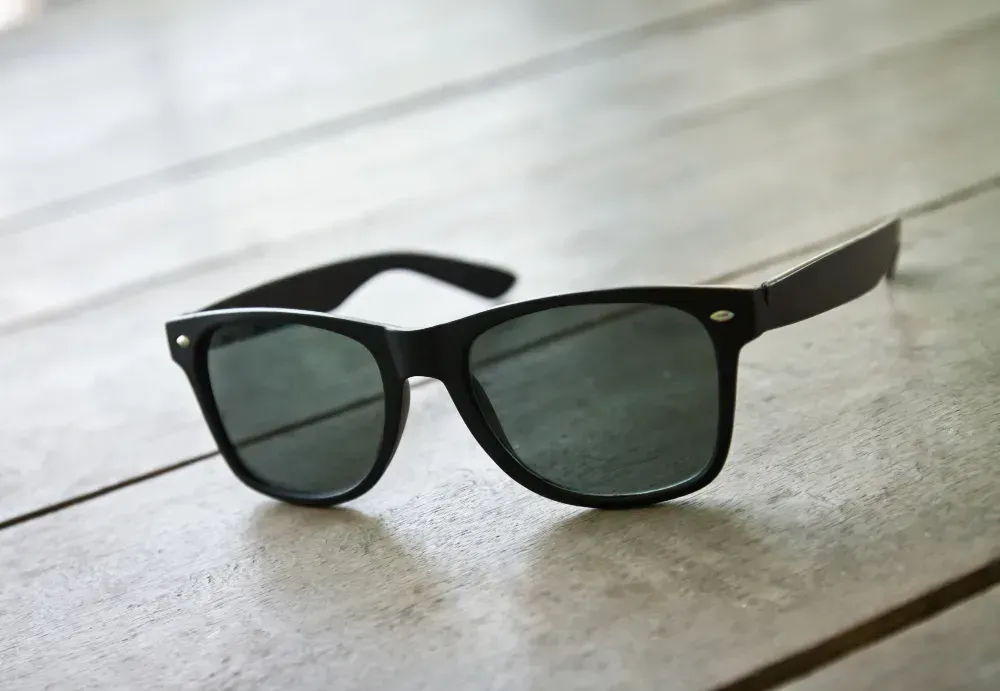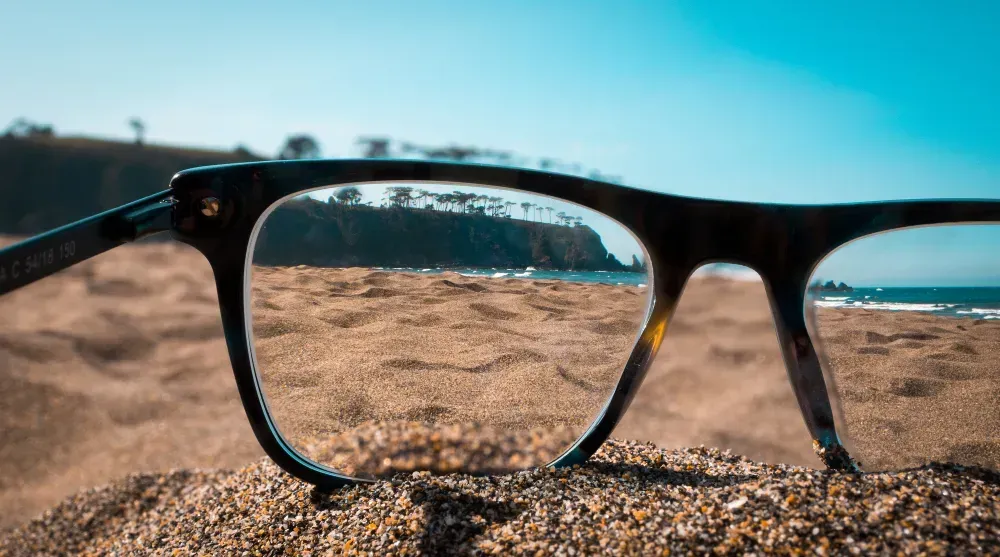What Are Polarised Lenses?
Imagine you're driving on a sunny day. The road is blinding, your dashboard is reflecting sunlight, and the car in front has a glare that’s impossible to ignore. That harsh light is called "glare," and it's often caused by light bouncing off flat surfaces. This is where polarised lenses come in.
What are polarised lenses? In simple terms, they’re lenses with a special filter that blocks horizontal light waves, which are ones that cause glare. Vertical light still gets through, so you can see clearly, without the shine and shimmer getting in the way.

Key Benefits
- Reduce glare significantly from water, snow, roads, glass, and shiny surfaces
- Improve contrast and colour clarity, making scenes appear sharper
- May reduce eye strain and fatigue, since your eyes do not have to work as hard in bright light
- Ideal for driving at night and daytime driving, with better vision and fewer distractions
- Provide comfort during long exposure to UV rays and blue light near reflective surfaces
Ideal Uses
- Driving under bright skies, where road glare is a hazard
- Near water for boating or fishing, so you can see beneath the surface
- In high-glare snow conditions, such as skiing, where snowy environments can cause glare
- In sports like cycling, golf, or running, to reduce glare from pavement or wet roads
- Anywhere you spend a lot of time outside and want to protect your eyes from UV and harmful UV rays
What About Non-Polarised Lenses?

Now, just because a pair of sunglasses isn't polarised doesn't mean they're not helpful to your eyesight.
Non-polarised lenses are still tinted to reduce brightness, but they don’t have that glare-blocking filter. They simply cut down the overall light entering your eyes, which is enough for many everyday situations.
Key Benefits
- Reduce overall brightness of daylight
- Often come with UV protection, safeguarding from ultraviolet rays
- Are generally more affordable than their polarised counterparts
- Do not cause visual distortion when looking at LCD screens, phones, or GPS devices
Ideal Uses
- Everyday use, walking around town or errands where glare is not extreme
- When using digital devices outside, as polarised sunglasses may distort the view
- Casual leisure moments like park visits or outdoor cafés
- Interior-to-exterior transitions where screens need to remain visible
- When you want UV protection on a budget, without needing glare reduction
How Do Polarised vs Non‑Polarised Sunglasses Compare?
Here's a quick comparison to make things simple:
| Feature |
Polarised Sunglasses |
Non‑Polarised Sunglasses |
|---|---|---|
| Glare reduction |
Excellent at blocking glare |
No targeted glare control |
| Brightness reduction |
Effective for light and glare |
Good for brightness only |
| Colour & contrast |
Enhanced & vivid |
Standard clarity |
| Eye strain relief |
Significant relief in bright light |
Some, but glare can still cause squinting |
| Screen usage |
Can distort LCD screens |
Screens appear normal |
| Eye protection |
Must check for UV protection(look for UV400) |
Often includes UV protection, check label |
| Prescription availability |
Available in prescription lenses |
Also available as prescription |
| Cost |
Slightly more expensive |
Generally cheaper |
| Ideal use |
Driving, water, snow, bright outdoors |
Casual outdoor use, screen work |
The big takeaway? Polarised lenses enhance vision and comfort in bright, reflective environments. Non-polarised lenses are a great general-purpose option, especially for people who don’t often deal with glare.
If you’re still torn between the two, think about how and where you’ll wear them.
When to Choose Polarised or Non‑Polarised Lenses
| Situation or Preference |
Best Lens Type |
Why It’s the Better Choice |
|---|---|---|
| Driving in bright conditions |
Polarised |
Reduces glare from roads and other vehicles |
| Spending time near water |
Polarised |
Cuts glare from the water's surface, improves visibility |
| Skiing or in snowy environments |
Polarised |
Reduces blinding snow glare and improves terrain contrast |
| Outdoor sports and high-glare activities |
Polarised |
Enhances clarity and comfort under intense sun |
| Regular screen use outdoors (phones, GPS) |
Non‑Polarised |
No screen distortion, clear view of LCDs and digital displays |
| General casual wear or city walking |
Non‑Polarised |
Adequate brightness reduction without distortion |
| Budget-conscious sunglasses purchase |
Non‑Polarised |
More affordable, still offers UV protection |
| Low-light or overcast environments |
Non‑Polarised |
Better visibility in shaded or changing light |
| Need for prescription lenses |
Either |
Both types are available with prescriptions |
| Want all-day comfort in bright light |
Polarised |
Reduces glare and eye strain for long-term exposure |
And here’s something important that you need to remember: not all polarised sunglasses come with UV protection. So always check the label or ask your optometrist before buying.
How to Choose the Right Pair
1. Assess your activities
If you spend time outdoors, near reflective surfaces, skiing, boating or driving, you will benefit from wearing polarised lenses. For city walking or relaxed indoor-outdoor lifestyle, non polarised lenses might work well.
2. Think about digital screens
For people who rely on phones or GPS, non polarised sunglasses are friendlier to digital displays.
3. Check for UV protection
Always look for UV400 or wording indicating filter light up to 400nm. This detail helps block ultraviolet rays and harmful UV rays.
4. Decide on prescription
Both lens types can be made as prescription lenses, so you don’t have to compromise between vision correction and glare control.
5. Evaluate cost vs benefit
Consider if you have to spend more to gain significant visual comfort and safety. Yes, polarized glasses cost more, but their benefits often justify the price for frequent outdoor users.
6. Test before you buy
You can try them on indoors and check devices for distortion, then step outside to assess glare and comfort. You can also test by tilting sunglasses in front of a phone screen, polarized lenses will make the screen darken sharply.
So, Are Polarised Lenses Worth It?
Unfortunately, the cliche answer we can give you is that it all depends on your lifestyle because that's the truth. If you spend a lot of time outdoors like driving, walking, at the beach, or on the water, polarised sunglasses will make a noticeable difference. They protect your eyes, improve comfort, and let you see the world more clearly.
But if you’re someone who mostly wears sunglasses for short walks, while running errands, or if you rely on your phone or in-car screens often, then a non-polarised pair might suit you better.
Still unsure? Visit Nazarian Optometrists and try both options for yourself. We'll help you choose the perfect lenses based on your needs, lifestyle and budget.





